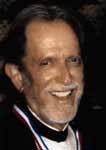Newton's third law may solve orthokeratology conundrum
Night-therapy orthokeratology is a noninvasive procedure for improving vision by reshaping the cornea.

For several years, the disparity between the pachymetry and topography findings perplexed Jerome M. Garber, OD, FIOS, FAAO, a private practitioner in Old Westbury, Long Island, NY. However, through an epiphany-like revelation, Dr. Garber believes he has identified the explanation, and that it lies in Newton's third law of motion: For every action, there is an equal and opposite reaction.
"A conundrum that tortured me for almost 2 years was resolved by merely understanding simple corneal anatomy and physiology combined with the basic forces of nature," Dr. Garber said. "Ortho-K initiates anterior epithelial flattening, but this induces a steepening response of the posterior epithelial surface and a chain-reaction that continues successively onward through each of the cornea's four other contiguous layers."
Although it seemed intuitive that flattening any material should result in a thinning response, in aiming to collect the measurements to prove this relationship for a paper he planned to present at the 2005 Congress of the International Society of Contact Lens Specialists, he was surprised to find that corneal thickness was not affected by Ortho-K.
Using an ultrasound pachymeter (Corneo-Gage Plus, Sonogage) that determines both epithelial and total corneal thickness, measurements were taken at 30 points across the entire cornea in all patients at baseline and all scheduled follow-up visits (1 week and 1, 3, and 6 months). However, the results were consistent in showing an absence of any change in epithelial or total corneal pachymetry.
Presuming the findings might be due to measurement error, Dr. Garber recalibrated the pachymeter and repeated his research. He also considered poor examiner technique as the explanation, but in speaking to others, he learned his results were being duplicated.
Dr. Garber told Optometry Times, "I was bothered by these findings, which seemed to make no sense, and discussed them extensively with colleagues, engineers, Alex Dybbs, PhD, who designed the ultrasound pachymeter, and anyone who would listen. My epithelial epiphany did not arrive until after my health had begun to suffer because of my frustration."